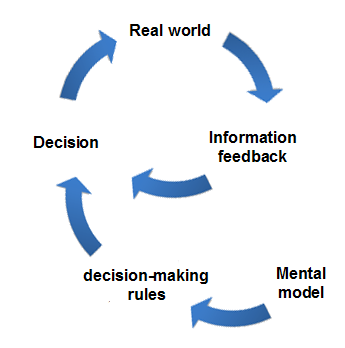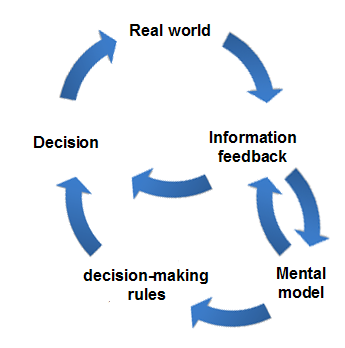Have you ever hung out at your local coffee shop and looked around at the patrons enjoying their coffees or chatting with friends? Of course you have. We all have. But have you watched these people and made certain decisions about what they are like and who they are based on what you are observing? You probably have without even thinking about it. It’s definitely something I do regularly while working at my local coffee shop. I have certain beliefs that come into play and allow me to make gut reactions to each person I observe. These decisions I make about the people around me are a part of the image of the world I have floating around in my head. It’s a part of the mental model that each of us create individually. Each of us has a mental model that differs slightly from other.
What exactly is a mental models?
A mental mode is an explanation of your thought processes about how the world works around you. It is based on beliefs rather than facts. It represents your surrounding, interactions, and perceptions. It has even been linked to the shaping of behaviour and the ability to solve problems. It’s always in flux and will continue to change. Some stimuli that can influence our mental models include age, gender, surroundings, and interactions.


We can use mental models to help us solve problems when it comes to designing user interfaces. Analyzing the mental models of our users allow us to get into their head space, think like they think and feel how they feel. This can be especially helpful when you are building a new product from scratch because users will still have predetermined perceptions of how your application is going to work and will fit into their daily lives. They come across these beliefs through various means such as competitor products, religious beliefs, or society influences. If your product doesn’t fall within their mental model, users will be quick to quit using your product.
Let’s looking how we can create mental models of our users to help prevent these types of mistakes. Here are four steps that you can use to help you understand your users’ beliefs.
- Do User Research
First, find the target group you want to focus on. Then follow them. Observe how they navigate the world around them. Analyze how they perceptive the world around them. You can also test how this group interact with competitor products. Where do they run into trouble? What mental models do they have about your competitor systems? Can you learn and change anything to improve the target groups perception of the solution? Finally understand how different stimuli can influence and change their mental models. The more you know about these users, the more informed your decisions will be to figuring out how to make your product successful. -
Build Affinity Diagrams
An affinity diagram allows you to group your observations in common clusters. This is extremely helpful in finding patterns about your users and connections between their individual mental models. An affinity diagram is exceptionally helpful when you are communicating with large teams. You can then use these patterns to make well informed recommendations. If you are still trying to nail down your overall goals then this can help you focus them in. -
Craft A Persona
Based on the research and common clusters, create your target user. You may find this user doesn’t fall inline with the users you first observed. Maybe your initial assumptions weren’t close enough to the real representation you want to reach. That’s ok. Going through these steps is all about learning and making better decisions. When you craft this persona, don’t just give it a simple personality. Create a real person. Give them a name, occupation, family, history. Understand where their beliefs stem from. You’ve got the information from observing your target audience and building your affinity diagrams to know enough about this special user to give them a life. Think about putting this target user in scenarios. How would they interact with your product? What do they think? Who are their friends? -
Define Goals
Now that you know who your user is and they think, you can review your overall product goals. Do they match up? If not then it’s time to redefine them. Focus these goals inline with your crafted user. Use the scenarios that you put your user in to help guide how your interface should work. By creating goals that are inline with the views of your users, you’ll create an intuitive interface that your users will enjoy using. This will translate into more interaction time and more pleasurable experiences. Hence, living up to your users mental model.
More often than not as designers, we just like to go out and build. It makes a lot of sense since we have our own mental models about what our users are thinking. But by taking a step back and using the four steps above to build our own mental models, we can build smarter interfaces and products that can really can improve the world around us.
###Further Reading

